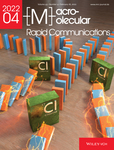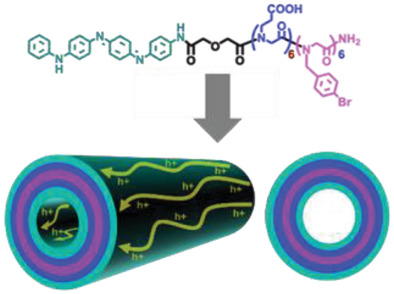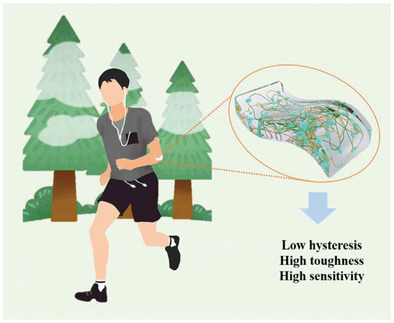Journal list menu
Export Citations
Download PDFs
Cover Picture
Effect of Bulky Atom Substitution on Backbone Coplanarity and Electrical Properties of Cyclopentadithiophene-Based Semiconducting Polymers
- First Published: 18 February 2022

Front Cover: In article number 2100709 by Byoung Hoon Lee and co-workers, the effect of chlorine atom substitution on the optoelectronic properties of cyclopentadithiophene-based donor–acceptor π-conjugated polymers is investigated. The chlorine atom substitution leads to deteriorated optical and electrical properties of the polymer due to chain distortion as a consequence of steric hindrance adjacent to the chlorine atoms.
Inside Front Cover
Strain Sensing Behavior of 3D Printable and Wearable Conductive Polymer Composites Filled with Silane-Modified MWCNTs
- First Published: 18 February 2022

Inside Cover: In article number 2100663, Minghua Zhang, Jianke Du, and co-workers, demonstrate that conductive polymers filled by ACB and silane-modified multi-walled carbon nanotubes (MWCNTs-MTES) possess superior printability, stretchability, conductivity, and strain sensing behavior. A flexible wearable strain-sensing skin patch is printed, and it can successfully record motion signals on human joints with good stability and repeatability, showing potential applications in the field of healthcare and motion monitoring.
Back Cover
Interfacial Effect on Dielectric Properties of Self-Assembled Polythiourea-Based Copolymers for Ultrahigh Energy Storage
- First Published: 18 February 2022
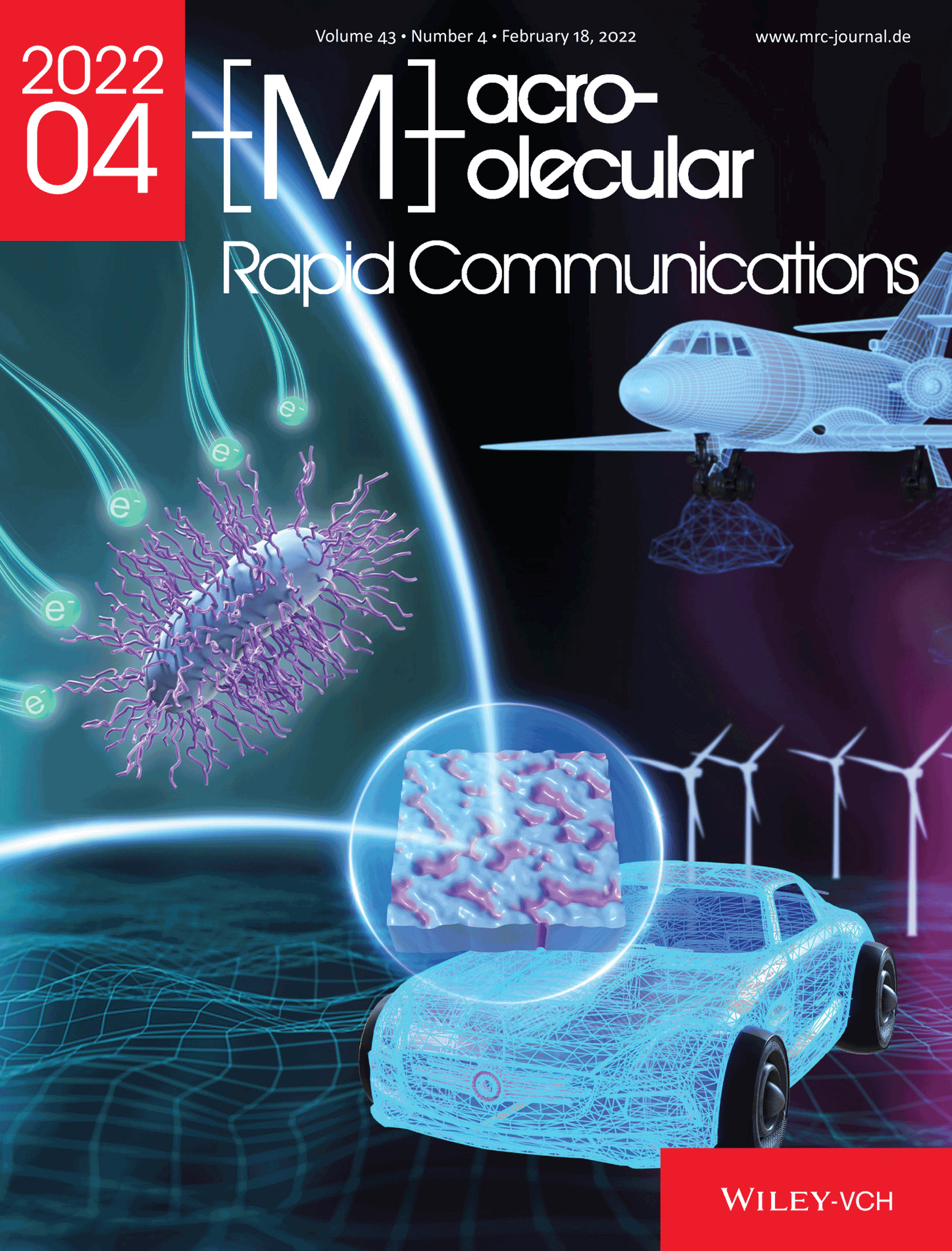
Back Cover: In article number 2100700 by Yang Feng, Shengtao Li, and co-workers, a new amphiphilic block copolymer with clear phase separation shows an extraordinarily high energy density of 29.8 J cm−3. This is because the coiled block molecule in the interfacial region can substantially improve the breakdown strength from 652 MV m−1 to 1166 MV m−1, while maintaining a high dielectric constant of 5 and a low loss of <0.01.
Masthead
Perspective
Controlling Properties and Functions of Polymer Gels Using Photochemical Reactions
- First Published: 17 January 2022
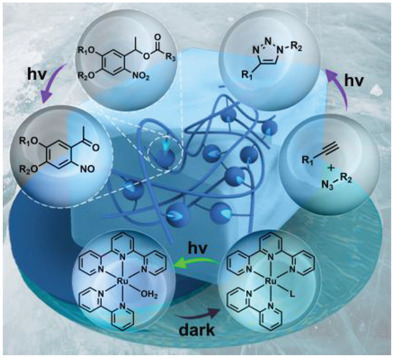
Photoresponsive polymer gels are smart materials that show light-controlled properties and functions. In this Perspective, the design principles for photoresponsive polymer gels are introduced. The potential applications of photoresponsive polymer gels for healable materials, drug release systems, and extracellular matrices are demonstrated. The remaining challenges of photoresponsive polymer gels are discussed.
Research Articles
Effect of Bulky Atom Substitution on Backbone Coplanarity and Electrical Properties of Cyclopentadithiophene-Based Semiconducting Polymers
- First Published: 18 November 2021
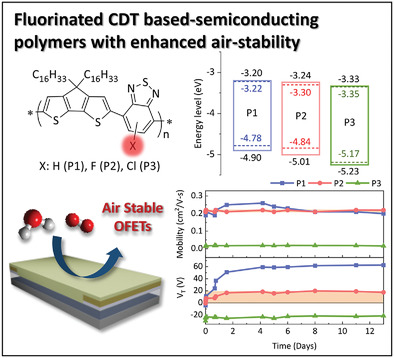
Effect of single atom substitution in an acceptor unit on the optical, electrical, and morphological properties of cyclopentadithiophene-based donor–acceptor-type semiconducting polymers is investigated. Simultaneous enhancement of charge carrier mobility and air stability via substituting a carbon atom by CF functionality and deterioration of electrical properties by CCl substitution are reported to provide design guidelines for air-stable donor–acceptor semiconducting polymers.
Strain Sensing Behavior of 3D Printable and Wearable Conductive Polymer Composites Filled with Silane-Modified MWCNTs
- First Published: 25 November 2021
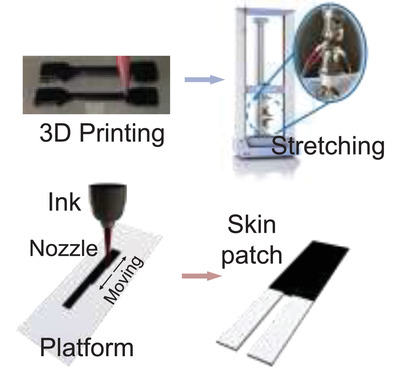
It is demonstrated that conductive polymers filled by acetylene carbon black and silane-modified multi-walled carbon nanotubes possess superior printability, stretchability, conductivity, and strain sensing behavior. A flexible wearable strain-sensing skin patch is printed, and it can successfully record motion signals on human joints with good stability and repeatability, showing potential applications in the field of healthcare and motion monitoring.
Interfacial Effect on Dielectric Properties of Self-Assembled Polythiourea-Based Copolymers for Ultrahigh Energy Storage
- First Published: 01 December 2021
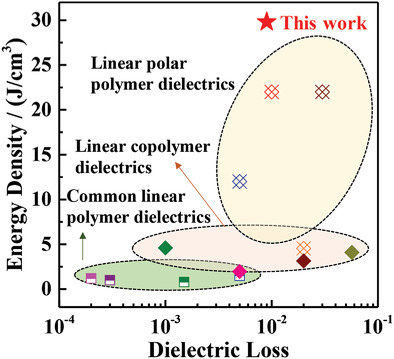
The block molecular conformation in interfaces affects dielectric properties of self-assembled polythiourea-b-polydimethylsiloxane (PTU-b-PDMS). The coiled conformational block molecules induce charge trapping sites and dipolar polarization. It improves the breakdown strength up to 1166 MV m−1, while maintaining high dielectric constant and low loss. The PTU-b-PDMS exhibits a high energy density of 29.8 J cm−3.
All-Organic Superhydrophobic Coating Comprising Raspberry-Like Particles and Fluorinated Polyurethane Prepared via Thiol-Click Reaction
- First Published: 01 December 2021
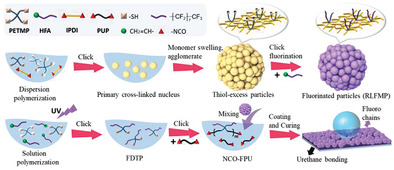
With the chemical resistance in mind, an all-organic, all cross-linked superhydrophobic coating comprising raspberry-like fluorinated micro particles (RLFMP) and fluorinated polyurethane (FPU) is prepared via thiol-click reactions. The “robust particles + complaint resin” strategy prevents the product coating from multiple damages and improves the self-healing efficiency. The RLFMP-FPU coating can maintain superhydrophobic state after 60 h intensive alkali corrosion.
Amphiphilic Peptoid-Directed Assembly of Oligoanilines into Highly Crystalline Conducting Nanotubes
- First Published: 17 January 2022
Rational Process Design for Facile Fabrication of Dual Functional Hybrid Membrane of MOF and Electrospun Nanofiber towards High Removal Efficiency of PM2.5 and Toxic Gases
- First Published: 21 December 2021
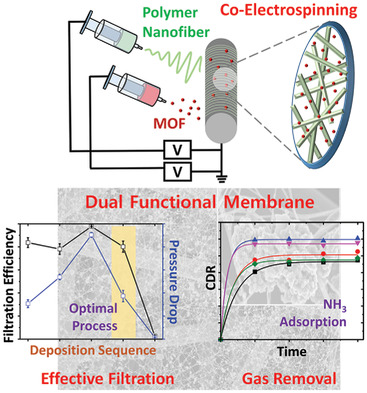
The rational design of an electrospinning/electrospraying process is demonstrated for the fabrication of effective dual-functional membranes comprised of a polymer nanofiber and metal-organic framework achieving a high filtration efficiency/quality factor for removing particulate matter and toxic gases efficiently.
Unraveling Sequence Effect on Glass Transition Temperatures of Discrete Unconjugated Oligomers
- First Published: 30 November 2021
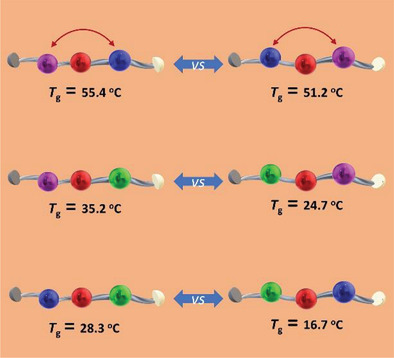
A remarkable impact of monomer sequence on glass transition temperatures of discrete unconjugated oligomers is reported. Evidenced by experimental analysis and computational simulations, changing monomer sequence results in altered degree of twisting of the oligomer backbone and distinct rotational flexibility of the sequenced oligomers, which thus caused the variation of glass transition temperatures.
Stretchable Hydrogels with Low Hysteresis and High Fracture Toughness for Flexible Electronics
- First Published: 27 December 2021
Investigation of Degradation Mechanism of Y6-Based Inverted Organic Solar Cells and Their Utilization in Durable Near-Infrared Photodetection
- First Published: 09 December 2021

Photo-degradation mechanisms of inverted organic solar cells based on Y6, which is an effective acceptor material, are investigated. The low photo-durability Y6-based inverted solar cells can be caused by the aggregation of Y6 due to heating by photo-irradiation. The aggregation of Y6 is suppressed at a low temperature, and the Y6-based devices can be useful as a photo-durable near-infrared detector.




